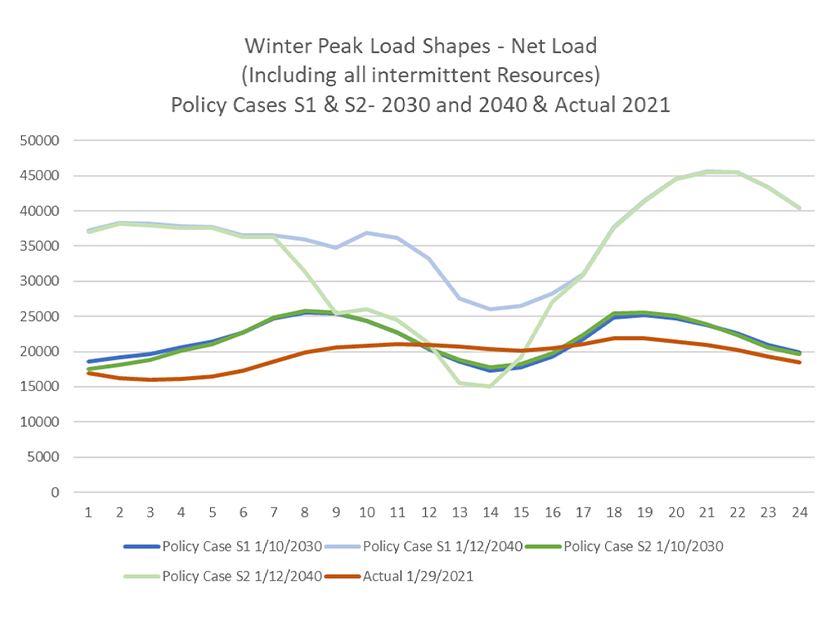
NYISO on Tuesday reviewed with stakeholders the preliminary results and assumptions for the first phase of a two-part Grid in Transition study on the reliability effects of integrating increasing amounts of renewable resources into the power system.
“This first phase is really leveraging the Climate Change Phase 1 study case work, [which] was completed about two or three years ago,” Nicole Bouchez, principal economist for market design, told the Installed Capacity/Market Issues Working Group. “Because of that, the second phase is going to be coordinating with the 2022 planning studies.”
Phase one of the study is expected to be completed by end of this year.
For the second phase starting in August, the ISO will use its upcoming system and resource outlook study and policy case for scenario one (S1) and the NYSERDA integration analysis for the scenario two (S2) policy case. The 2022 effort will identify and quantify through a new study the potential level of system flexibility and grid attributes needed to reliably maintain system balance, Bouchez said. (See NYISO Launches 2022 Grid Planning Study.)
Load Shapes
NYISO staff incorporated stakeholder feedback into the study, including reliability and market considerations from Grid in Transition work performed last year. Staff also evaluated the results from phase one, including looking at load shapes, the distribution of hourly ramps and what multi-hour ramps look like, Bouchez said.

A graph of summer peak load shapes for 2030 and 2040 showed essentially the same shape for policy cases S1 and S2 for 2030, while 2040 shows an obvious difference with a midday dip being exacerbated by projected additional solar output during midday intervals, she said.
The graph of winter peak load shapes for 2030 and 2040 shows a notable difference in the underlying load between the two. While the 2030 load shape looks not that dissimilar from existing load, “the real difference comes when we look forward to 2040 and see that the overall load has grown a lot with electrification … this is clearly a winter peaking scenario in 2040 between summer and winter, but because of the different builds you see the impact a different solar build has even in winter low solar circumstances,” Bouchez said.
The first key finding in the nearly complete system and resource outlook study is that the total installed generation capacity to meet policy objectives within New York is projected to range from 111 to 124 GW by 2040, more than double the 51 GW of generation capacity that exists and is contracted today.
Second, the study finds that the capacity contribution of intermittent renewable resources declines as more are added to the system. The limited contribution of incremental resources inhibits the ability of the power system to effectively meet mandatory resource requirements and to serve load in hours in which renewable generation is limited or unavailable.
Third, the outlook study finds that “if resources are not built in excess of reserve requirements to meet reliability margins, New York will likely import significant amounts of energy that may or may not be renewable. Even with additional imports, there could be significant renewable energy that is not deliverable to customers during peak producing hours.”
Next Steps
The ISO’s next steps include expanding the analysis to look at ramps when the net load does not become negative, considering stakeholder feedback, and drafting the phase one analysis portion of the report in early August,
“We’re going to be starting in July to work on the system and resource outlook study production cost data, which would be looking at both policy cases, but also will be looking at different loads at that point too, just like the outlook study looks at different loads in the S1 and S2 policy cases,” Bouchez said. “Our intent is to attempt to finalize the study in September. It may be a bit of a stretch goal, but we are trying to aim for that.”

